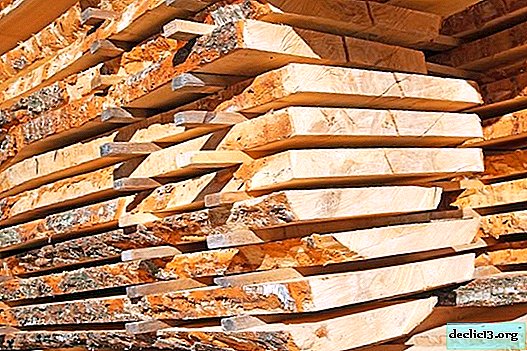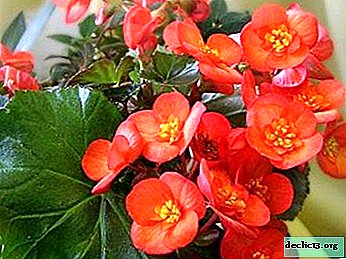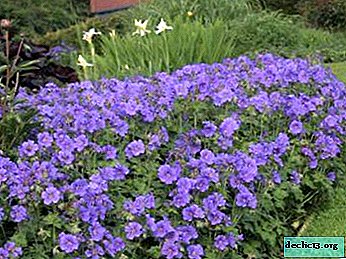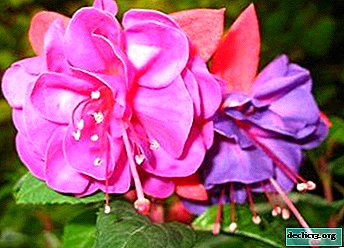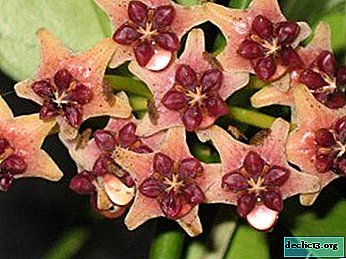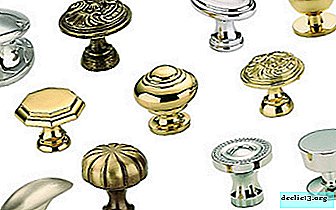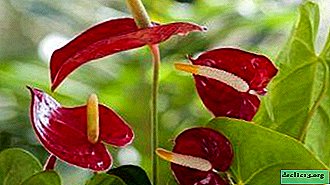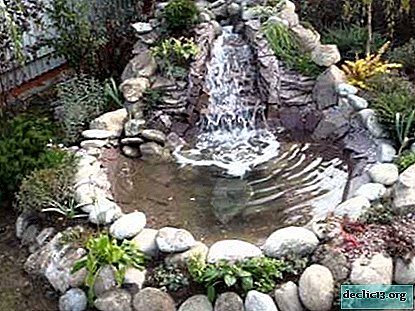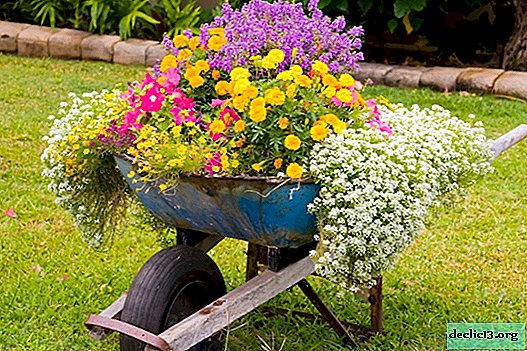Gentle and bright balsam Vanka wet: a description of the plant, its photo and common diseases
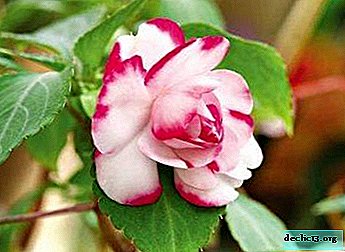
Balsam Roly is a fairly popular flower in the post-Soviet space. This plant was brought to Europe in 1596 and has since grown on our windowsills. As soon as they do not call him - Balsam, Touchy, Roly-wet. And among the people this plant has another simple name - "light". Its appearance is distinguished by lush greenery and very attractive colors, the color scheme of which varies from light pink to dark red.
The mere appearance of this plant causes a smile on the face and a good mood. This article will discuss how to properly care for and what it should be protected from.
Botanical description, history and scientific name of the flower
"Roly wet" is a herbaceous plant, perennial. It belongs to the Balsamic family. The scientific name is Impatiens, which is translated from Latin as impatient.
Also popularly known as "touchy", "light", "cucumber." It should be noted that breeders have developed more than 400 varieties of balsamins.
The name "Vanka wet" the plant received in Russia because of droplets of clear liquid that appear on the leaves with heavy watering. Thus, the flower gets rid of excess fluid.
TIP! Be careful, this liquid often has a sweetish taste and attracts insects (ants, flies). The homeland of this plant is the eastern tropical forests of Africa, as well as Central Asia. It was introduced to Europe in the 16th century. To be more precise, to England. There, the flower quickly took root at the royal court.The plant was brought to Russia only in the 19th century. Due to the long flowering, it was immediately renamed "Eternal Light". If you ensure the proper conditions, it can bloom all year round. Soon the flower fell in love and began to breed in all the noble houses.
Appearance
This variety of balsam is a shrub with a height of 45 cm to 70 cm. The leaves are dark green in color, the trunk and branches are light green in color. The leaves are heart-shaped, up to 4 cm wide, up to 10 cm long. Medium-sized flowers.
"Roly wet" is a very fragile flower, stems and leaves can break even from the wind. The characteristics of this plant are in droplets of juice, which are secreted by the leaves and the translucent structure of the trunk and branches. They ate to direct the sun's rays at the flower, you can see the internal structure of the stem.
Photo
What Vanka-wet looks like can be seen in these photos:





Where and how to plant it?
There are varieties of these flowers indoor, and there are garden. In any case, all varieties need to be planted in the spring, when nature is ready to grow and develop. Indoor varieties need pots. To do this, you need to choose a pot that is slightly larger than the root system. A large pot leads to the development of the roots, not the flower. The composition of the land is described below.
For balcony varieties, it is advisable to choose oblong rectangular pots or hanging baskets. You need to remember the fragility of balsam, gusts of wind can break branches.
TIP! When the first cold weather sets in, you need to remove the pots into the room. Roly wet does not tolerate cold and especially frost. At night, when the temperature drops, the flower may die.LANDING INSTRUCTIONS:
- choose a pot a little more roots;
- pour drainage to the bottom;
- sprinkle the earth, the preparation method of which is described below;
- dimple and insert the rooted cuttings or young seedlings;
- pour plenty of earth;
- after an hour, pour out the remaining water from the sump.
Lighting and location
 "Roly wet" supporter of bright color. The level of lighting should always be high, but at the same time the sun's rays should not fall on it. Direct rays of the heavenly luminary can cause leaf burns, and the plant will die.
"Roly wet" supporter of bright color. The level of lighting should always be high, but at the same time the sun's rays should not fall on it. Direct rays of the heavenly luminary can cause leaf burns, and the plant will die.
In summer, the window needs to be shaded by something, and in winter, on the contrary, it is necessary to increase the level of illumination, since light is one of the main factors affecting flowering.
Periodically, you need to scroll the flower pot around its axis to change the side that directly reflects the light. This is necessary in order to avoid deformation of the bush. A regular change of position will provide you with a beautiful round bush.
The best place for a flower, of course, is the windowsill. But, drafts should be avoided when opening a window. From them, the plant dies.
Soil requirements
This plant is not particularly whimsical to the composition of the soil. It should be loose, moist and not have an acidic environment. To prepare the soil, you can take sheet land, sand and peat.
REMEMBER! Drainage must be provided. Due to the fact that the flower requires abundant watering, it is necessary to ensure proper ventilation of the root system.If the earth is very nutritious, then the plant develops quickly, but only in terms of greenery, flowers, as a rule, are few in this case.
How to care?
In order for a wet rodent to please you all year round with its appearance, it is important to provide it with the following conditions:
- The air should be fresh.
- The soil must be constantly moist. The topsoil must not be allowed to dry.
- Watering should be on the edge of the pot. If water gets on the root neck, the roots and trunk can rot. Drain the water from the pan.
 In summer, the temperature should be at least + 25 degrees Celsius, and in winter at least + 10 degrees Celsius.
In summer, the temperature should be at least + 25 degrees Celsius, and in winter at least + 10 degrees Celsius.- If the temperature is above +22 degrees Celsius, you need to spray the flower with water. It is important that the water does not get on the flowers and buds.
- If necessary, the top layer of the earth should be loosened to a depth of 1 cm.
- If a white coating forms on the ground, change the top layer. These are salts that are found in hard water.
- You need to fertilize always when the plant blooms. The choice should be made in the direction of potassium-containing fertilizers.
- In spring, the flower needs to be transplanted, since during the winter it often loses its attractiveness due to exposure of the stems. It is important to do spring trimming of elongated stems. This does not apply to hybrid varieties, since they independently branch well. A pinch is needed for:
- getting rid of bare stems;
- flowering improvements;
- increase branching.
Watch a video about balsam care:
Common Diseases and Pests
Attention! In general, Vanka's balsam is unpretentious and hardy. However, it, like other plants, can be affected by diseases and pests.Among the pests can be identified:
- aphids;
- whitefly;
- a tick (at low humidity it is amazing).
In the fight against these pests, only insecticides will help you.
Among the diseases, fungal infections of the roots and trunk are often found due to excessive watering and stagnation of water in the pot. Also, an excess of water leads to mold in the pot.
In this case, if it’s not too late, you need to urgently transplant a flower. As much as possible, shake the root system from contaminated soil. It has an acidic environment, which is very detrimental to balsam.
Watch a video about combating spider mites on balsam:
Why do leaves turn yellow and fall?
The reasons for this phenomenon are as follows:
- high air temperature;
- low soil moisture;
- lack of light.
Why don't buds bloom?
 If there are no buds in general, then it means that feeding is incorrectly selected. Phosphorus and nitrogen fertilizers contribute to the development of foliage only. In this case, you need to change the drug to potassium enriched.
If there are no buds in general, then it means that feeding is incorrectly selected. Phosphorus and nitrogen fertilizers contribute to the development of foliage only. In this case, you need to change the drug to potassium enriched.
When if there are buds, but they do not bloom, but fall out, you need to start feeding flower or increase the dose.
The plant simply lacks the necessary trace elements and minerals. You also need to increase the dose of lighting.
Propagation Features
"Roly wet" can be propagated in two ways:
- SEEDS. After the flowers, fruits appear that, having reached their maturity, release seeds. These seeds can be planted in small pots, covered with a small layer of earth, watered, covered with foil and put away in a warm and dark place.
After the first sprouts appear, the pot must be placed in a lighter place. When the sprouts get stronger, they can be transplanted into permanent pots. You can feed seedlings only before transplanting. After transplanting, flowers can be approved after 20 days.
IMPORTANT! Reproduction by seed, this is a cat in a poke. Seeds rarely retain the properties of a native bush. This method of reproduction is more labor intensive and time consuming. Not the fact that in the first year of the life of flowers you will see flowering. - SHEETS. This method of reproduction is more practical. It is recommended by experts. It saves time and the likelihood that the seedling will be of the same beauty as the mother bush.
So, cut off healthy, strong shoots from the main bush. Their length should be 5-8 cm. Place the cuttings in water, or wet soil. After rooting, the cuttings can be planted in small pots with a diameter of up to 10 cm. It is possible to plant several cuttings in one pot. This will allow you to quickly get a lush bush.
"Roly wet" is a very beautiful plant. It is relatively unpretentious, and with sufficient attention it will delight you with its bright colors all year round.

 In summer, the temperature should be at least + 25 degrees Celsius, and in winter at least + 10 degrees Celsius.
In summer, the temperature should be at least + 25 degrees Celsius, and in winter at least + 10 degrees Celsius.
